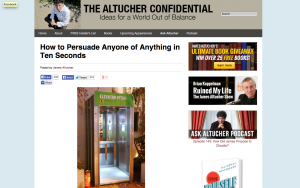Read the original article here
Upon Heidi Leung’s post on the issue of part-time jobs, I had have the chance to read a great article called “The 15 Hour Work Week: Canada’s Part-Time Problem.” The article argued that on a financial scale, most companies prefer hiring part-time employers as this form of employment helps to save up labour cost such as compensation, health care, and much other benefit. Therefore, in Canada’s market, “part-time work accounted for 80 percent of net job creation.” Indeed, whether to work part-time or full-time is a decision made by the employees; however, due to the low full-time job offers, many employees faces financial struggle as their part-time working hours are too flexible to be secured. In the blog post, Heidi came up with the great solution in response to the issue as she claims the necessity to set regulations on minimum part-time hours that could benefit the employees for fixed hours. However, in my opinion, I don’t believe this form of regulation would be enough as not every part-time employee face the same financial issues and wish to have more hours. In fact, for employees facing financial struggle, I do believe that this is the area that the government should intervene on. Due to the fast advancement of technology and globalization, the need for pure labour has been highly deducted; however, the mechanism in technology could never replace humanity. These employees, ones who are in need with financial support, rather of getting financial funds by the government of NGO, should rather use the money as investment and educate themselves. While financial support and regulations could be a short-time solution, company’s training program and educating these workers with a higher set of skills are eventually the long-term solution that could spark a light upon the labour market.
Sources:
“How Do I Survive If I Can Only Find Part-time Work?” About. N.p., n.d. Web. 11 Nov. 2014.
“Heidi Leung.” Heidi Leung. N.p., n.d. Web. 11 Nov. 2014.
“The 15-hour Workweek: Canada’s Part-time Problem.” The Globe and Mail. N.p., n.d. Web. 10 Nov. 2014.




